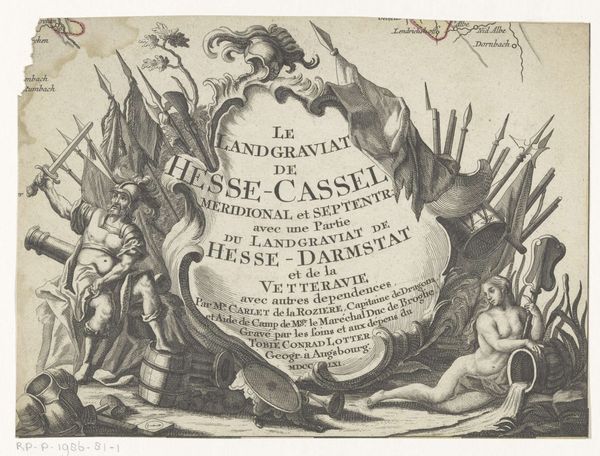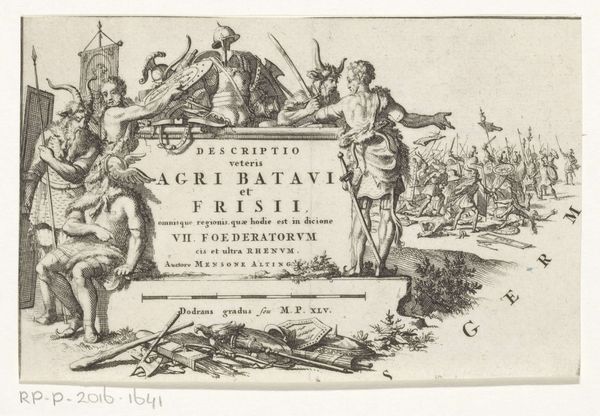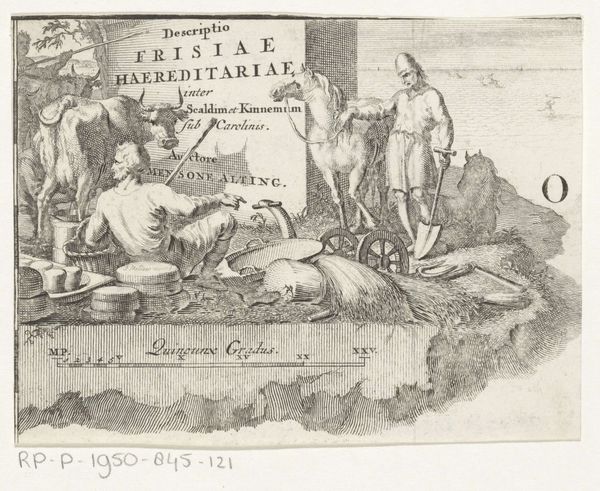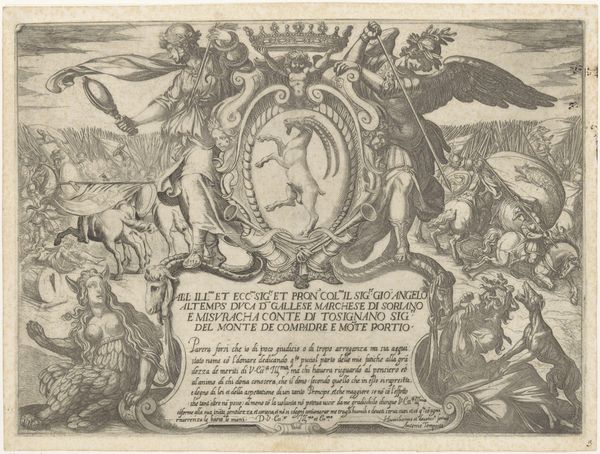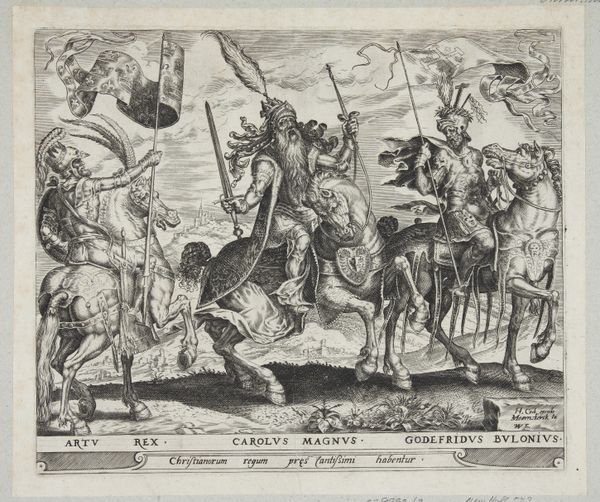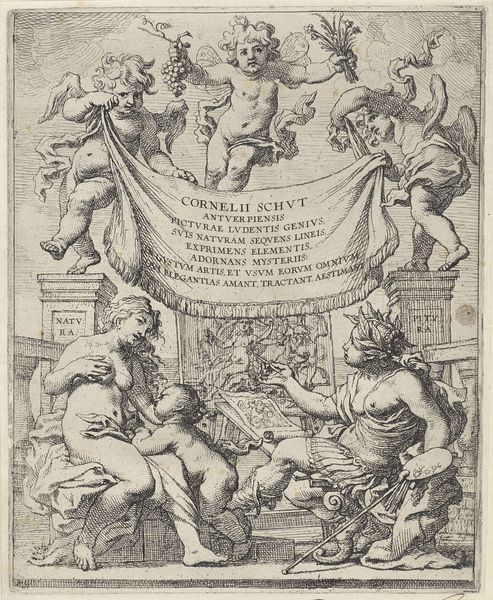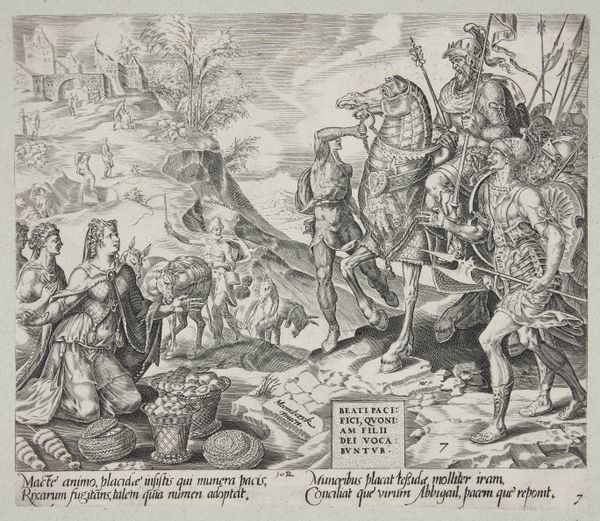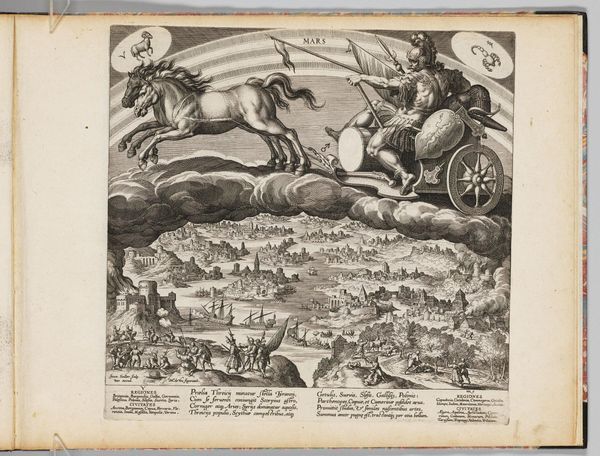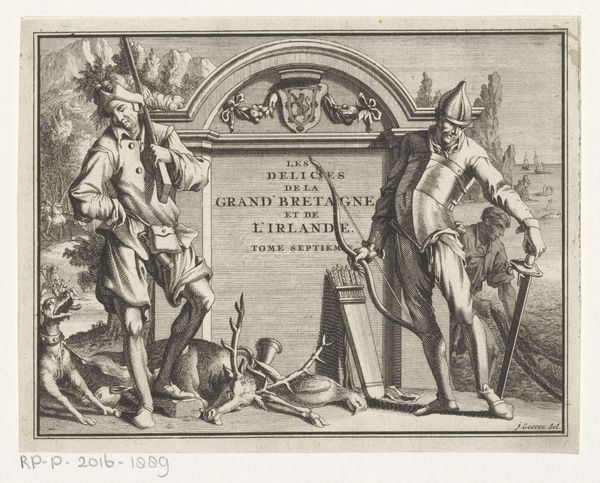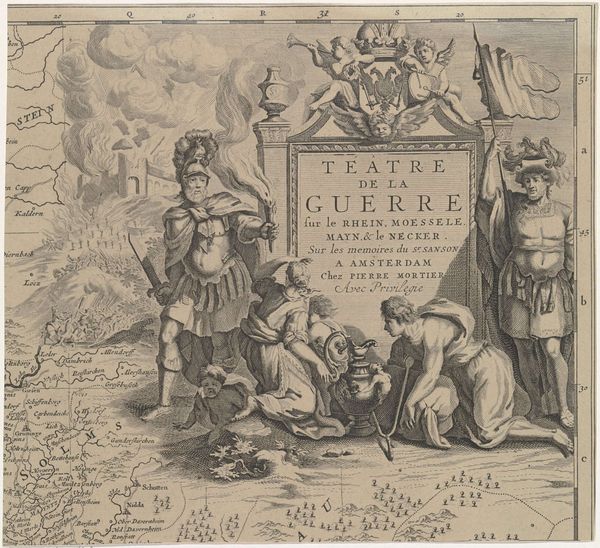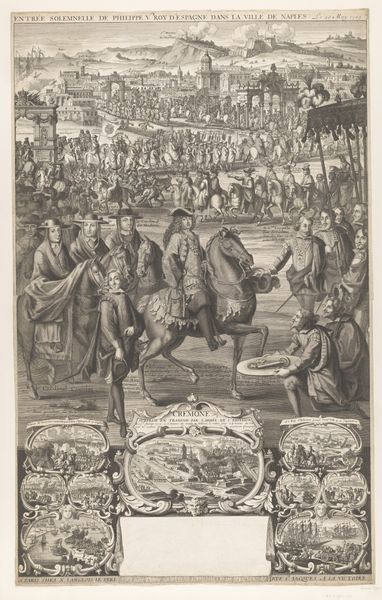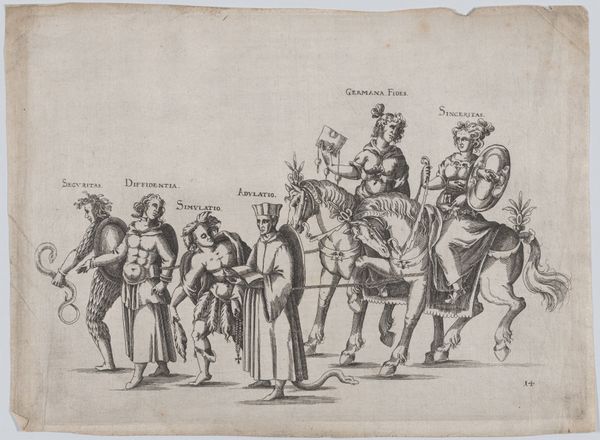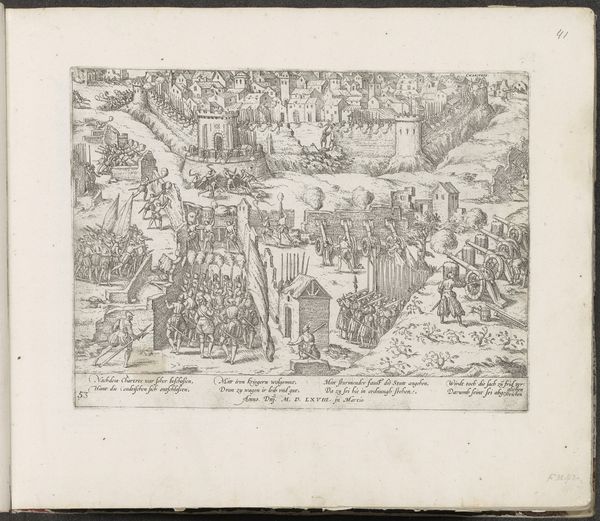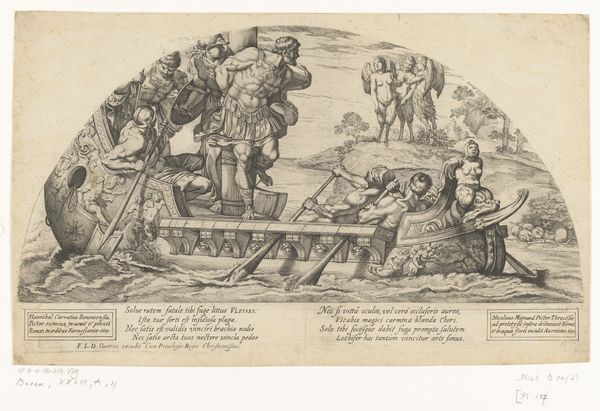
graphic-art, print, engraving
#
graphic-art
#
allegory
#
baroque
# print
#
pen sketch
#
old engraving style
#
landscape
#
figuration
#
history-painting
#
engraving
Dimensions: height 179 mm, width 188 mm
Copyright: Rijks Museum: Open Domain
Editor: We’re looking at “Ceres, Diana en schapenscheerder rondom cartouche,” an engraving by Tobias Conrad Lotter, dating from 1707 to 1757. It feels incredibly intricate, almost dizzying in its detail. What stands out to you when you look at this work? Curator: I observe a fascinating interplay between figuration and text, set within the established genre of landscape. The allegorical figures flank a central cartouche. Note how Lotter balances Ceres' fecundity with Diana's hunting attributes, creating a dynamic visual dialogue. Editor: It seems as though every element has a purpose. How do the figures themselves play into this structural arrangement? Curator: Precisely. The female figures serve as architectural supports to the frame as the composition hinges on duality: civilization versus wilderness. Observe the use of the rounded cartouche shape to create visual contrast with the strict angular shapes within the depicted cartography to the background, thus establishing foreground and background through simple visual components. Editor: So, the meaning arises less from the content of the story being told, and more from how the piece is constructed? Curator: Yes, quite. Focus less on narrative. Instead, dissect the work, tracing lines and understanding the structure in which form conveys value as art. Editor: This has really shed light on how focusing on the compositional elements reveals a deeper intentionality, it really does become more fascinating with scrutiny. Curator: Indeed. It underscores how formal analysis enriches our appreciation and how a closer inspection will allow the observer to really interpret this and other examples of baroque print media as art.
Comments
No comments
Be the first to comment and join the conversation on the ultimate creative platform.
